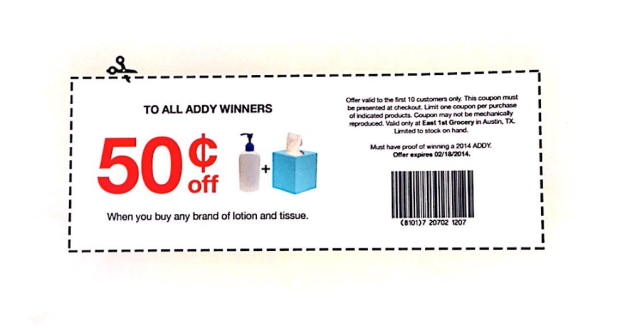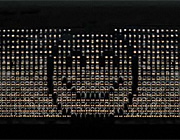Well, it’s happened again. Just as it does with every new client with a product that’s used by both genders. They’ve got research in hand that shows their customer satisfaction among women lagging compared to their ratings with men. They seem to be losing women to online and/ or competitors.

Actually, ignoring them will make them (and the their money) go away.
They know they have to do something, but there is a fierce and palpable resistance to doing it. I have been in meetings with C-level executives who have reliable research in which customers give their stores and service a lukewarm review, and I am still asked, essentially, why they should really act on this information.
Change is scary. But in this economy, many brands need to do it quickly and smartly or die.
Here are some of the top questions I get when brands realize they need women but don’t really want to evolve.
Q: Does marketing to women mean excluding men?
A: No. Of all the harmful marketing-to-women myths out there, this is the one we need to sacrifice first. Improving your marketing to women doesn’t require painting your product pink or excluding men or being “for women only.” Often the only thing required is to be a bit more human. To look a little closer at the details. To simply respect a woman’s intelligence rather than ignore her existence.
It means inviting her in. She’ll reward you with her loyalty if you do it right. And she generally brings her friends and family with her.
Q: Why worry about women if you’re marketing to both genders?
A: Because the steps you take to make your brand and product more desirable to women will make it more desirable to everyone. Women are the world’s toughest customers. Please them and you’ll please all. I call this MARKETING TO GENDER 2.0. It’s the next phase. It’s where brands like Apple already are.
It’s why Best Buy is the last big box electronics store standing. It’s why Wii was the game to buy this past Christmas.
Q: I have lots of information and insights about women. Isn’t that enough to make my marketing to women effective?
A: No. If information were all it took, there would be more success stories like Apple and Best Buy and Curves and Dove. What’s required is to place just as much passion and energy into crafting messages, ads, and communications as you do uncovering the insights that inform that creative. Research alone will not create a great brand campaign. Knowing what a woman wants doesn’t mean much if you can’t communicate that fact to her. And women do have a language all their own. Details matter. There is an art to it. Inspiration, intuition, and talent are required. It helps to think like a woman, laugh like a woman, love like a woman. And yes, it can help quite a bit to be a woman. Research is where you start, but translating it properly is how you finish.
Q: Are you anti-male?
A: No. I’m pro common sense. Here’s my logic. The vast majority of women don’t feel they’re portrayed accurately in advertising (they’re not), and many are actually offended by the very advertising that’s supposed to entice them. I really believe this is an indictment of the way U.S. advertising agencies operate. 97% of the creative directors are men. Think about that for a second. That means men decide what gets presented and produced and all the details inbetween. And here’s the ugly truth – if those male creative directors decide an idea won’t impress the awards show judges at Cannes (who are overwhelmingly male), that idea will never get out the door to you, the client. You won’t even have the honor of seeing it.
So, remember that great insight you finally unearthed? The nugget that practically guaranteed a favorable female response, provided it was served up properly? Sadly, it probably won’t get served up at all. This is not an indictment of men, but of the way ad agencies have always been run.
Q: Why make a big deal about gender? Shouldn’t we be beyond that by now?
A: I couldn’t agree more. We should be talking to our own tribes of customers regardless of chromosomes. But, it is a scientific fact that men and women get excited by different things, laugh at different jokes, and travel different paths during the decision making process. Until marketers learn to invite women into their brand and pay attention to the details that matter to them, they’ll continue to lose a very valuable consumer.
Now for the bonus question. This is the one I’m often asked when people find out I specialize in marketing to women.
Q: Why women? Isn’t that a rigid niche?
A: Women are not a niche – they control 80-90% of every consumer purchase decision being made right now.
Women control seven trillion dollars in spending – roughly equal to the entire Japanese economy.
Women are TWO for the price of ONE: Impress a woman, and the husband and family comes with her. Turn a woman off and the husband and family goes with her.
The Economist cites women as the single most powerful force in the global economy.
What makes a brand more appealing to women usually makes it more appealing to everyone.
According to Tom Peters in his book, TRENDS, (which gives a very very compelling story about why marketing to women is smart) says women make the BIG purchases:
personal computers – 66%
consumer electronics – 60%
vacation decisions – 89%
home furnishings – 94%
new home sales – 75%
kitchen appliances – 88%
healthcare purchases – 80%
new cars – 60% . And these are old stats. The percentages have actually grown, but I always site Tom and encourage people to buy this book because the message carries more weight when it’s delivered by a guru.
Women are loyal and vocal. Other women trust them. They have book clubs. Everybody knows that’s where the important stuff is discussed.





